Codices
Type: Book, Class: Artifact, Rarity: Legendary, Attunement: Required
| Properties | Stats |
|---|---|
| Size | Varies |
| Weight | Varies |
Description
History
A codex grants its owner remarkable powers beyond the scope of even most artifacts. Many were created around during the first three eras, Wonder, Darkness, and Gold. Some of them bind certain magics and abilities to the world, if they were to be removed or destroyed they could cause instability and devastation.
The codices are spread far and wide across the world. Often guarded by powerful indivduals, giant monstrosities, or by a nation's armies. They could also be lost under rubble or in an old library forgotten to time.
Attuning
All the codices require attunement, which requires the reader to spend a month in uninterrupted study of no less than 8 hours per day, 6 days per week.
Once attuned, the owner of the codex need not take the book with them. They can leave it in a secure location and still gain its benefits, but must refresh their knowledge through 8 hours of uninterrupted study once per month or else lose its benefits.
Sacrifice
Some of these books require the attuned owner to surrender some of their life essence to satiate the dark powers constrained or described in their texts.
Sacrificing requires rolling some number of Hit Dice, losing that many hit points and the Hit Dice immediately, and reducing your maximum hit points by the same amount. While the effect powered by the sacrifice persists, the lost hit points and Hit Dice cannot be regenerated. When the effect ends, you can heal the damage and recover the Hit Dice normally.
If sacrificing Hit Dice causes you to drop to 0 hit points, you fall unconscious and all effects you created end. You cannot sacrifice more Hit Dice than you have. If you must sacrifice a Hit Die to power an effect but you have none, the effect ends.
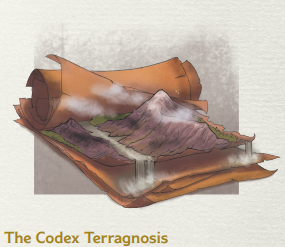
The Codex Terragnosis
Written by Hierophant Prithvirana during the Age of Wonder in 738, this book is a comprehensive treatise on the nature of the Mundane World and the material and philosophical principles that set it apart from all other planes.
This codex illuminates the Law of Nature, the Law of Time, and the Law of Death and contains a description of the world’s creation, the origins of divine and arcane magic, as well as the War Between the Gods.
The Hierophant built his wisdom and knowledge into the codex terragnosis. The book binds and shapes the world, defines it and defends it. While it resides within this manifold of the timescape, the Mundane World is safe.
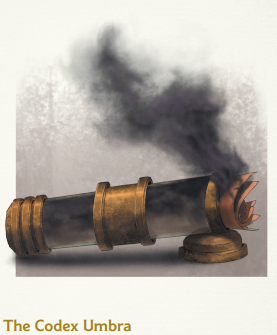
The Codex Umbra
Kalidasa Dhar, writing in the codex umbra during the Age of Wonder in 265, gives us our only glimpse into scholarly thought regarding the essence of shadow magic before the Kingdom of Uthasil. It is surprisingly similar to our own modern notions.
Dhar hypothesized that the dark power we call shadow is the dead life essence of a previous world. What the nature of this world or the beings that may have inhabited it was, she offers no insight. Few modern sages take Dhar’s theory seriously, but all note that no wizard since has penetrated the heart of shadow so successfully.
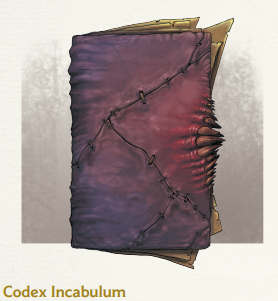
Codex Incabulum
The only codex known to be written during the Age of Kingdoms, the codex incabulum is often incorrectly cited as the cause of the Ashlem Invasion in 12270. This is a popular guess repeated so often that it has attained the status of fact. Rather, the codex stopped the demonic infestation from razing Oxtrad and Covania, confining the sea of fiends that erupted from hell and preventing it from spreading across the world.
Authored by Marcus Gaius in the 11,101, during the height of the Reton Empire, this book like all the codices has been lost and found many times over the centuries since. Often those who attune to it delve deep into dark powers and are lost.

The Codex Automata
Written by the Wizard Huang Fei late in Age of Conquest, the codex automata, The Book of Machines synthesized three thousand years of scholarly thought on the subject of magical constructs and was instantly realized as the definitive work on the subject. Other tomes detail the process of creating a golem, but Fei called this “mere smithery.”
Fei’s goal was to understand the fundamental magic of animated constructs, and in this he succeeded beyond his wildest dreams. His golem army now know as Warforged defended the wizard and secured his dynasty’s rule for a thousand years.

Codex Dryadalis
A human adopted as an infant by elves, Irllyn Ffwllyg en Orrell ce Yth went on to become the Kingdom of Uthasil’s greatest authority on the fae, their magic, and their casual association with cause and effect.
Because she was a mortal wizard, she understood the rules that constrained the use of magic. Because she was raised as an elf, she had the mind of a fae. Because she was the greatest wizard of her time, she was able to synthesize these two antithetical philosophies into one coherent masterwork and thereby change the world forever. The elves never allowed this again.

Codex Miror
Written by Durthara, the Queen’s Archmage, the Book of Wonder is the first recorded codex and gave the Age of Wonder its name. In those days, the Kingdom of Uthasil’s word for “magic” translated as “wonder” or “marvel.” Magic, then, was newly discovered by Men and seemed a limitless resource. Spells were invented, made fashionable, and forgotten before anyone knew they could be written down.
History records the codex miror as the greatest, the most powerful of the codices, but no sage has ever owned more than two, so no one in history could claim to be an expert, and most of the records of what the Book of Wonder could do were written hundreds of years after it disappeared.
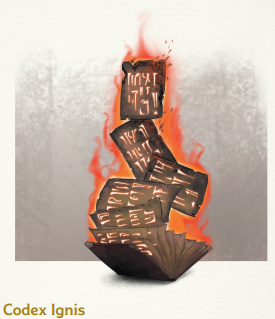
Codex Ignis
Hu Tai was the last Magister of Fire, and like her contemporaries, the other seven elemental magisters, she swore to bind her knowledge into a tome and thereby seal it away, ending the Century of Eight Emperors and the wars that ensued as each emperor’s elemental magister used their lore to warp and twist reality for their regent.
History records that her efforts were successful. The Eight Magisters sealed their power away, and the wars ended. Only rarely in the thousands of years since has one of the eight elemental codices emerged and been mastered, and never more than one has been active in the world since.

The Chronos Codex
Like the codex multiversalis, the origins of the chronos codex are not well recorded. Its earliest reference is in the possession of the Uthasil wizard Subhadrangi, who may also be the book’s author. The book is also referenced in the Tales of Rupananda, but it’s possible Subhadrangi and Rupananda were the same woman. A handful of references talk of a sage who went by both names during that age, but there’s no direct confirmation from any contemporary source, and no source definitively claims either woman wrote it or indeed gives an independent account of the life of either.
The Book of Time is the least well known of the codices. It tends to disappear for millennia at a time, and as a result, unlike the other Books of Magic, scholars are happy to leave it drifting in the eddies of the time stream.
It was only 300 years ago when the Khoursir scholar Chartam suggested that the book’s author had not yet been born, and that the book’s presence in the past of this time manifold is a result of its future author using its power. This once-fringe hypothesis has grown in popularity in recent years.
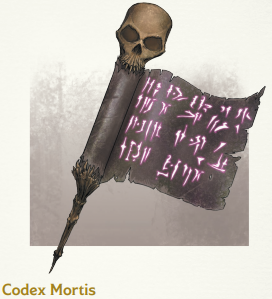
Codex Mortis
Exiled Empress Wu Jiao wasted no time planning her return to the throne and the restoration of the Wu dynasty. Her first goal was the return of her greatest general, the barbarian Lady Czorgan. As Czorgan was dead, this meant much research was in order. But Empress Jiao was already an accomplished wizard, and her first success took less than a year.
Emboldened by her necromantic research and the return of her right hand, Jiao pressed her study further and became the greatest necromancer in history. She succeeded in restoring her family to the throne, but history calls her the Dead Empress and her second period of rule the Dead Empire, granting her no narrative of restoration, only revenge.
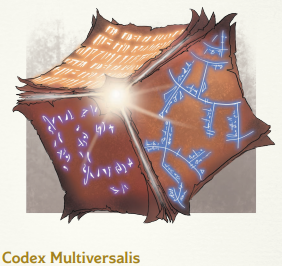
Codex Multiversalis
Certainly the first wizard to enter history as an owner of the Book of All Worlds was Padmavati, the Alienist. But there’s no actual record of her writing it, though scholarly consensus is that only she could have done so. Instead, the accepted wisdom is that she did write it, just not in this manifold. She is from a different world, sages presume. The truth may never be known. The deeds she performed are well-documented, including enacting The Forbidding, which permanently exiled the Demon Lord Asmodeus to the Nine Cities of Hell. If the nature of this ritual is detailed in the codex multiversalis, no wizard since has deciphered it.

Astral Codex
Written by Archasteron Xille Xelviani of the Court of the Electress of the Karnala Catacombs in the Age of Darkness, the astral codex is one of only two reliable sources of information on the astral elestials, the star elves who once served as the hidden hand of Val. For millennia, sages assumed Archasteron Xelviani was an astral celestial, but philosophers in the Age of Conquest concluded he or she was a human, one of the Hlan who voluntarily accompanied the dark elves into the Underdark.
Modern thought from wizards of Remon's Academy in Sunwood holds that the banishment of the astrals created the Underdark, though this opinion has not become widely accepted, cannot be proven, and may never be proven.
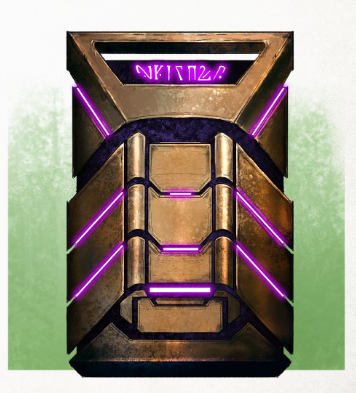
Codex Adamant
The Age of Gold, produced sages and loremasters to rival the Age of Wonder. One of these, Muhya bint al-Mustakfi, the Hazarite Saint of Dreams—used her Dreamfall ability to push her consciousness back over 12,000 years to before magic entered the material plane, to the when the dwarves first walked the surface of Felwind. In her dreams, she watched the vast and impenetrable home of the steel dwarves, Kalas Mithral, rise and become, to many, the capital of Mor-Thir at the time.
She observed the steel dwarves for 30 years at the height of their power, saw their innermost thoughts, tapped into their knowledge. These decades of dreams lasted only one night for her.
When she woke, disoriented from a lifetime spent among the dwarves, she couldn’t remember her own language. Her servants and her palace seemed alien to her. Slowly, her memories of the dream started to fade, urgent and desperate, she wrote down everything she learned while the early dwarvish language was still fresh in her mind, sleeping little, eating less. Her servants feared for her life, but the result of months of fevered writing was the codex adamant, the Book of the Adamant Elementals, also known as the Book of Steel, the Mithral Tome, or the Chronicle of Kalas Mithral.
Like veins of ore beneath a towering mountain, ancient knowledge pervades the codex adamant. The hammers of long-dead smiths ring out with each turn of the page, reforging the reader with the essence of the steel dwarves. Possessors of this book become stalwart artisans, capable of withstanding the punishing blows of giants and unforgiving hours at the forge. The fruits of their labor are sturdy and bold: masterwork blades which refuse to dull, resilient armor forged from unbreakable adamantine, and loyal armies of metal soldiers. Eventually, however, all possessors of the codex succumb to its greed, joining the elementals in the Legion of Adamant who were, too, slain by their own corruption.
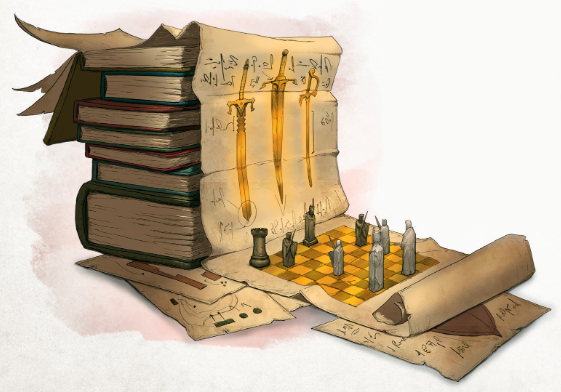
Codex Bellorum
For centuries, sages believed that the codex bellorum was created by Emperor Cassius I, first of the Five Crusading Emperors, during his pyrrhic campaign against Higara. After suffering a string of crushing losses, Cassius I claimed to have authored a new codex imbued with his observations on the Higaran art of war, and with it he was finally able to defeat the empress, beginning a long chain of events that eventually led to Athein conquest. No army carrying the codex bellorum has been bested since.
But codices are not created from mundane observations. Newly discovered records suggest that Cassius instead merely found the Book of War and passed it off as his own. Other references to the codex imply it was written by a deified figure which must have ruled the world many thousands of years before Athein even existed. This figure filled the tome with views on war, peace, strategy, foreign policy, and tradecraft, but also ethics, economics, social welfare, and ancient philosophy. Which empire they led to victory is hotly debated, and no other lost book causes more fistfights among historians.

Codex Canticalus
At first glance, the codex canticalus, also known as the Book of Song, doesn’t appear to be a tome at all. Instead, the codex is a deep blue music box, dotted with gilded constellations and accompanied with a case of engraved brass cylinders. Placing one such cylinder into the box and winding it releases a transcendent melody into the air, its rhythms rumbling in the heart of its listener. Thus is the wisdom of the codex conferred: not by sight, but by glorious sound.
Authorship of the codex canticalus has been attributed to numerous bards, but none have been confirmed. Analysis of the language used in the songs puts it no earlier than the begining of the Age of Gold and the end of the Age of Conquest, a span of 5,000 years. The book’s cylinders, known as leaves, contain songs sung in almost every language, mostly Elvish and Common, but also Dwarvish and Infernal. Surely these cannot be the work of a singular bard. Higaran musicologists from the Age of Expansion “proved” with statistics that each leaf’s composition reflects a unique musical style. Because this is the prominent view, it is also oft challenged. Perhaps it could be the work of a single bard.
Because no sage has ever beheld every leaf, and some leaves have been recorded as two different song-cycles before later scholarship revealed them to be the same cylinder, the number of cylinders is not known. It’s possible some have been written recently, if we accept the Higaran view that each cylinder is written by a different bard.
If so, perhaps the Book of Song is in some modern obscure genius’ hands even now—a bard of great skill but little note who found the blue music box and beheld within a blank cylinder, there to write their masterwork and preserve a fragment of their magic for all eternity.
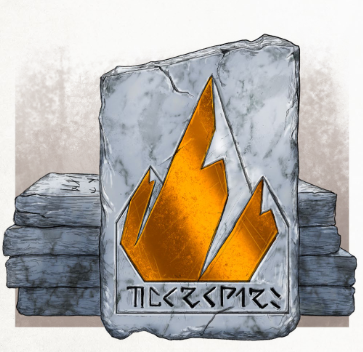
Codex Granatine
When the first stone dwarves were carved from the living rock in the Age of Wonder, they were imbued by the Goddess Ulaa with knowledge to work and shape the world. This lore served them well, as they learned to forge and smith, carving vast cities from the caverns below the earth. As this first generation of master smiths realized that they would eventually die, they inscribed their knowledge onto a series of stone tablets called the codex granatine, while they were able to pass on their secrets to their children, they were the only dwarves born with the inherent knowledge of the magic woven in the core of the world.
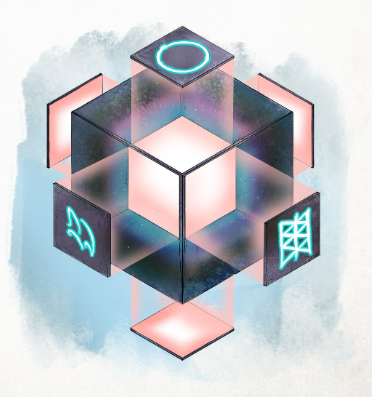
Codex Mutabilis
The codex mutabilis was first drafted by Zahra al-Atallah, the High Transmutor, Hazarite lord alchemist in the court of Khwaja ud-Dīn during the Age of Wonder. It extrapolates on her theory that law and chaos are both largely irrelevant to the true nature of the timescape, which only has one essential quality: change.
Zahra al-Atallah and her students argued that there is no cosmic balance that should be preserved, but neither are events wholly random and unpredictable. This thesis became highly controversial, eventually leading to her exile and the loss of the book.
“All things are made of the same essential matter, therefore no real obstacles stand in the way of one thing becoming another, or of one person becoming another. In fact, we all change constantly, without even noticing.”

Codex Oraculum
The language in the codex oraculum changes when a new creature opens the book, warping and twisting to fit their native tongue. The words “Fate folds as time flows” appear on the inside cover of the tome. Rumors say the author’s name changes every century, but currently the book credits Mirabin Das, Sword and Oracle of the Ganara Empire from the Age of Conquest. The codex oraculum changes the holder’s fate and the fates of those around them.
The book was first uncovered when a wizard accidentally created a dimensional tear while experimenting with magic. He entered the rift and found a world parallel to his own, with minor changes that entirely altered some people’s fates. The wizard found the codex there and brought it back to his world. From that moment on, the wizard possessed a shocking amount of good fortune, as he notes in the tome:
“The power inside this book allows me to forge a new destiny for myself and others through magic. The moment this tome came into my hands was the moment I became the new author of fate.”
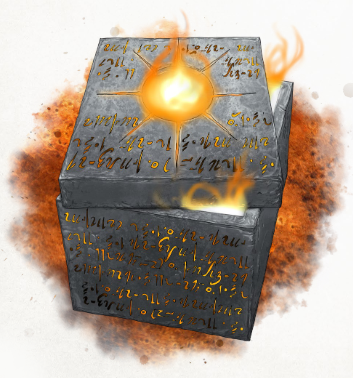
Codex Solaris
On the morning Kalidasa Dhar penned the final lines of the codex umbra, Eleodora Kai witnessed her first sunrise. Raised in the Khem-hor temple of the Everburning Sun, Lady Kai watched the sun-priests go about their work and absorbed their knowledge and rituals. She believed, from her earliest memory, that the sun’s rays were alive.
She passed through the rituals at a young age to become the Arcanum Extraordinary to the Knights of the Prismatic Fire. After years of service to the order, she began her great work.
Though Lady Kai was a coeval of the empire’s vizier, and stories pit the two great sorceresses against each other, the only contemporaneous accounts scholars have indicate they corresponded regularly and may even have worked together.
“The astute mage Kalidasa claims that there is no correlation between shadow and light, but I must disagree. If true shadow is formed from the dead echoes of a previous world, then true light must be its equal and opposite: raw cosmic energy, capable of rending old universes apart and building new ones from the ashes. For what else could have created such powerful remnants of the dark?”
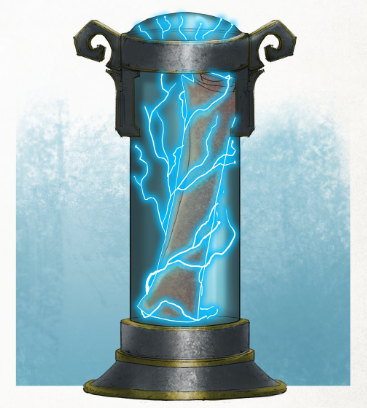
Codex Tempestatus
When the great sails of the Kingdom of Uthasil spread themselves across the world during the Age of Darkness, conquering almost every region in Felwind, only two peoples escaped their conquest. One of them, the people of Promise, defended their shores with great storms they seemed to summon at will.
For a decade, the Kingdom’s ships battered themselves against the storms sent against them. Every fleet sank, their hulls ripped apart, their sails burned by lightning. No research, no oracles could reveal the source of this storm mastery. Eventually, the Kingdom ceased its war against the storms, content with the rest of the world.
Three centuries later, a tome emerged written in the runic language of the Promised. It was not a treatise like the other codices, it was a book of rituals, each of devastating power. Scholars theorise that the power within this codex granted the Promised the power to withstand the mighty ships of the Kingdom. Though the identity of the author of the Book of Storms remains a mystery.
Mechanics in Game